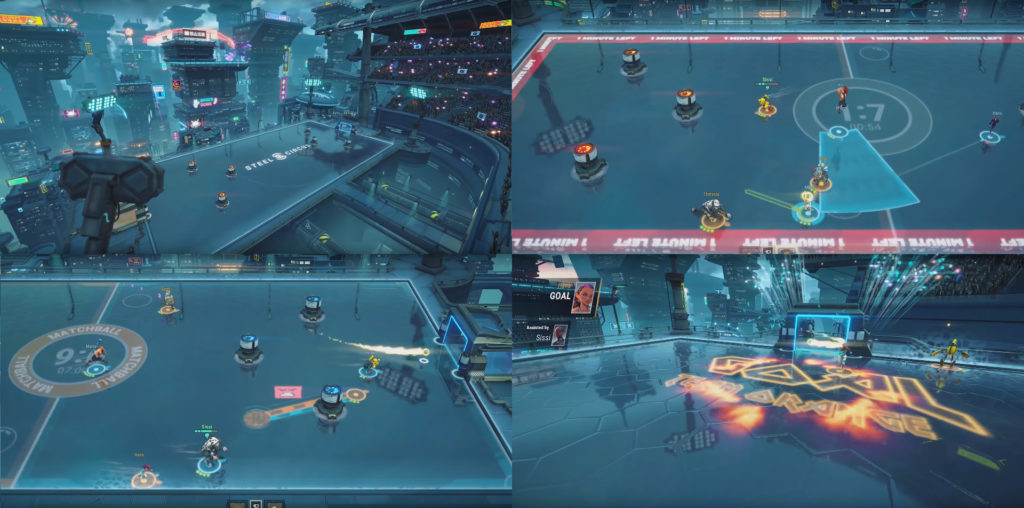
Steel Circus is a futuristic ball sport with MOBA or “Hero Shooter” elements. Each champion has two unique skills, such as placing defensive walls or stunning enemies.
The arena floor is one of the most prominent assets in the game – a giant display that shows player UIs, skills’ areas of effect, and things like goal animations or customizable spraytags. We really like how it ties elements into the game world that would traditionally be presented as UI overlays.

There’s quite a few things going on in rendering the floor, notably raymarched light scattering under its surface, and indirect lighting of the characters. In this post, I’ll break down all the different parts that went into it:
Continue reading

